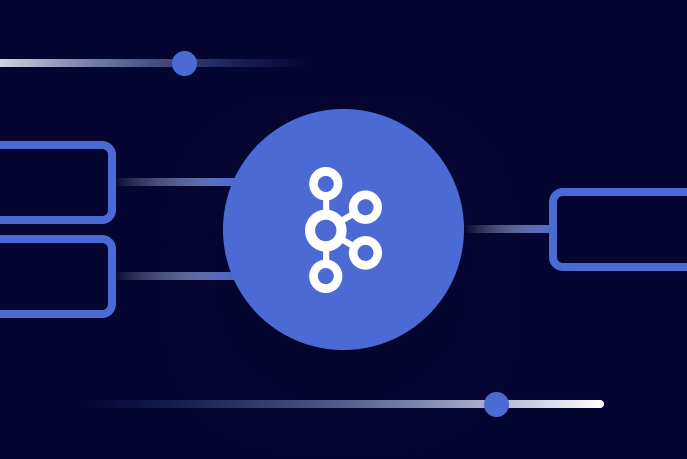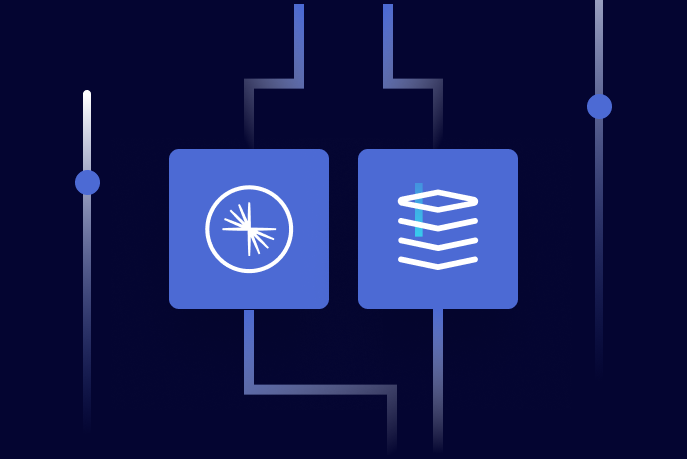Technology
Data Products, Data Contracts, and Change Data Capture
Change data capture is a popular method to connect database tables to data streams, but it comes with drawbacks. The next evolution of the CDC pattern, first-class data products, provide resilient pipelines that support both real-time and batch processing while isolating upstream systems...
Unlock Cost Savings with Freight Clusters–Now in General Availability
Confluent Cloud Freight clusters are now Generally Available on AWS. In this blog, learn how Freight clusters can save you up to 90% at GBps+ scale.
Contributing to Apache Kafka®: How to Write a KIP
Learn how to contribute to open source Apache Kafka by writing Kafka Improvement Proposals (KIPs) that solve problems and add features! Read on for real examples.
Build a scalable and up-to-date generative AI chatbot with Amazon Bedrock and Confluent Cloud for business loan specialists
In the dynamic landscape of conversational AI, the fusion of Amazon Bedrock and Confluent Cloud offers a groundbreaking solution for businesses seeking to create scalable and perpetually evolving generative AI (GenAI) chatbots. This collaboration ensures real-time data freshness, intelligent con...
How to Turn a REST API Into a Data Stream with Kafka and Flink
Learn why data at rest sometimes needs to be transformed into a stream of data, and learn how to turn a REST API into a data stream using Apache Flink and Apache Kafka. Along the way, you’ll also find out the advantages of having your REST API data in streaming format.
How to Use Flink SQL, Streamlit, and Kafka: Part 2
Part two in the series on using FlinkSQL, Kafka, and Streamlit dives into async.io, FlinkSQL syntax, and Streamlit barchart component structure.
How to Use Flink SQL, Streamlit, and Kafka: Part 1
In part 1 of this series, we’ll make an app, powered by Kafka and FlinkSQL in Confluent Cloud and visualized with Streamlit, that allows a user to select a stock, in this case SPY, or the SPDR S&P 500 ETF Trust. Upon selection, a live chart of the stock’s bid prices, calculated every five seconds...
Solving the Dual-Write Problem: Effective Strategies for Atomic Updates Across Systems
The post discusses the Dual-Write Problem in distributed systems, where atomic updates across multiple systems like databases and messaging systems (e.g., Apache Kafka) are challenging, leading to potential inconsistencies. It outlines common anti-patterns that fail to address the issue...
Best Practices for Confluent Terraform Provider
The blog post delves into best practices and recommendations for utilizing the Confluent Terraform Provider. It offers insights on efficiently provisioning resources within Confluent Cloud infrastructure while ensuring adherence to industry standards. Additionally, it provides a GitHub repository...
How to Set Up a Fully Managed Alerting Pipeline Using Confluent Cloud Audit Logs
Analyzing Confluent Cloud audit logs is good, but being proactively informed once something suspicious is happening is better. This article provides a conceptual guide for developing a pipeline that transfers Confluent Cloud audit logs into Splunk and defines automatic alerts based on certain events
Serverless Decoded: Reinventing Kafka Scaling with Elastic CKUs
Apache Kafka® has become the de facto standard for data streaming, used by organizations everywhere to anchor event-driven architectures and power mission-critical real-time applications.
Introducing Confluent Cloud OpenSearch Sink Connector
Confluent’s OpenSearch Sink Connector lets you easily send events to AWS OpenSearch and others—enabling fraud detection, log analytics, social media monitoring & GenAI w/RAG.
Contributing to Apache Kafka®: How to Write a KIP
Learn how to contribute to open source Apache Kafka by writing Kafka Improvement Proposals (KIPs) that solve problems and add features! Read on for real examples.
Analyzing AWS Audit Logs in Real Time Using Confluent Cloud and Amazon EventBridge
Today, we are excited to announce that Amazon EventBridge has joined the Connect with Confluent program, marking it the third AWS service to become part of this collaborative effort.
Introducing Confluent Cloud Freight Clusters
Learn how the latest innovations in Kora enable us to introduce new Confluent Cloud Freight clusters, which can save you up to 90% at GBps+ scale. Confluent Cloud Freight clusters are now available in Early Access.
How to Create a docker-compose.yml File With Kafka Docker Composer
Learn how to create a docker-compose.yml file for Kafka using Kafka Docker Composer. Set up clusters, perform failover testing, and more with this guide.
Schema Registry Clients in Action
Learn about the bits and bytes of what happens behind the scenes in the Apache Kafka producer and consumer clients when communicating with the Schema Registry and serializing and deserializing messages.





